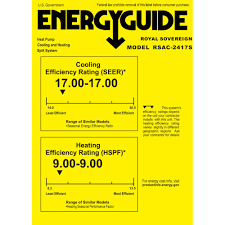Why does SEER matter?
What is SEER?
SEER / Energy Efficiency Label
SEER stands for Seasonal Energy Efficiency Rating/ Ratio. This is the ratio of cooling output per season divided by Watt hours used. The ratio is determined after evaluating the unit for a whole season of varying temperatures. The SEER number is displayed on the unit for us to see.
Why does it matter?
The rating you need can vary depending on many factors such as home size, duct work, and local temperature range. Depending on where you live in the United States the SEER recommendation and requirements may differ. In the hotter regions such as the Southeast and Southwest the minimum SEER rating is 14 to keep up with the heat. Here in the PNW we see a lower minimum rating of 13 because our temperatures that stay fairly mild through the seasons. Our team will always recommend a system with the correct rating for your home.
Another reason to consider the energy efficiency of HVAC equipment is age of existing units. Older systems usually have a lower rating around 8 or 9. With the SEER regulations any newer system will have a much better rating of 13 or higher. Replacing an old system with a newer one that has a better SEER rating will save you money and help your home stay comfortable. If you have an older system and are starting to consider if it makes more sense financially to repair your existing equipment or replace it, check out our post Repair or Replace to help.


